The following are ways to make phone calls from different boxes you might see on the street, on the wall of a building, etc. This is an on-going project for me, as I consider myself a novice at what I do. Anything new I learn, I'll return here, and continue on with this page. In no way am I taking responsibilty for your actions with the following information presented for educational and entertaiment purposes. For enlarged pictures please visit the picture section to the GHU site. Onward, lets have a look at the firs box that we see on  the left. This box has many different looks. One
being, what we see on the left. First, finding these
boxes are realatively simple. One can find this box
on the walls on the sides of houses, commercial, and
sometimes industrial buildings. As a tip, many if not
all of these boxes will have either "BELL" or "SIECOR"
printed on the box itself. SIECOR, now known as Corning
Cable Systems, manfuactures many of Bell's interfaces,
and other optical, and copper products for Bell.
Therefore, any other boxes printed SIECOR are definately the left. This box has many different looks. One
being, what we see on the left. First, finding these
boxes are realatively simple. One can find this box
on the walls on the sides of houses, commercial, and
sometimes industrial buildings. As a tip, many if not
all of these boxes will have either "BELL" or "SIECOR"
printed on the box itself. SIECOR, now known as Corning
Cable Systems, manfuactures many of Bell's interfaces,
and other optical, and copper products for Bell.
Therefore, any other boxes printed SIECOR are definatelya sure-fire indicator you've found a phone box. Anyhow, now that we have found what we are looking for, it's time to open the box up. Opening this box can be done 2 different ways. For the case of the picture on the left, a 7/16 hex driver can open this box up. A 7/16 hex driver can be purchased at any Candian Tire, or other hardware retailer for under $5 CDN. :) To open, simply loosen the bolt counter- clockwise, and open the door. Other boxes will simply be snapped shut, or have a plastic covered that can be slipped off. 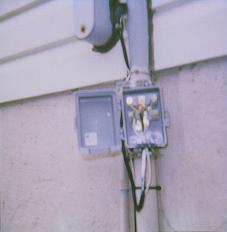 With the phone box open, we are ready to test our phone box. From
here on, I strongly suggest you use your own phone box,
and only your own box when attempting anything further
in this document. You run the risk of being arrested
when caught using a phone box that is not yours. With
your linemans handset, or beige box setup properly, you
are now ready to connect. on the right the box has 4
prongs in use. The prongs each have a wire connected
to it. The red and green wires are the ones we are
generally concerned with. The other 2, black and
yellow, are for the second phone line, but many houses
do not have 2nd phone lines, thus making the wires useless. Simply connect
the 2 wires from your handset to the prongs that have the red and green wires
connected with the prong. If you get no dialtone, simply reverse the wires
and try again. If you still have no dialtone, make sure the wires to your
handset have been stripped well enough to expose some copper wire to make the
connection. With the phone box open, we are ready to test our phone box. From
here on, I strongly suggest you use your own phone box,
and only your own box when attempting anything further
in this document. You run the risk of being arrested
when caught using a phone box that is not yours. With
your linemans handset, or beige box setup properly, you
are now ready to connect. on the right the box has 4
prongs in use. The prongs each have a wire connected
to it. The red and green wires are the ones we are
generally concerned with. The other 2, black and
yellow, are for the second phone line, but many houses
do not have 2nd phone lines, thus making the wires useless. Simply connect
the 2 wires from your handset to the prongs that have the red and green wires
connected with the prong. If you get no dialtone, simply reverse the wires
and try again. If you still have no dialtone, make sure the wires to your
handset have been stripped well enough to expose some copper wire to make the
connection.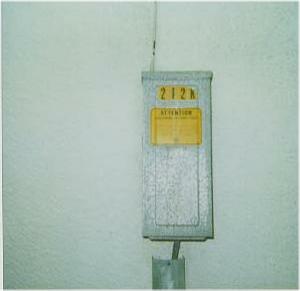 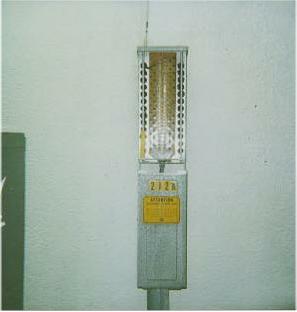 Older sytle of telco boxes The 2 telco boxes we see above are becoming less common it seems. These boxes can be found on older commercial buildings, and depending on the area, a-top of poles in a very old neighbour hood, with above ground wiring. As we can see from the picture these boxes are very simple to use. The box simply slides off by pulling the front cover off the box. From here, you can see series of paired prongs. Each pair corresponds rings and tip for a certain phone line. To get connected with a dial tone, we simply take our handset, and using the ring and tip wires, we connect the wire to the respective prong. If in doubt of which is ring, and tip, just switch the wires back and forth until you find your dialtone. The next box we'll look at is a common box among many neighbourhoods. This box is almost always a dull brown colour, or a very light green colour. 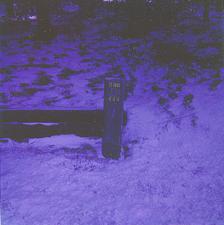 A 7/16 hex driver is required to open the box. To open,
locate 2 bolts on the sides of the box, close to the
ground. With our hex driver, loosen the bolts, and the
front cover will slide off exposing a series of colourful
wires. These .coloured wires are set in pairs, by colour
for ring and tip. To decipher which wire colour is what,
please refer this, which contains the colour codes needed
to decipher which pair colours are ring and tip. To
connect, simply strip the ring tip pair of your choice,
and clip your handset on the line. As you can see on the A 7/16 hex driver is required to open the box. To open,
locate 2 bolts on the sides of the box, close to the
ground. With our hex driver, loosen the bolts, and the
front cover will slide off exposing a series of colourful
wires. These .coloured wires are set in pairs, by colour
for ring and tip. To decipher which wire colour is what,
please refer this, which contains the colour codes needed
to decipher which pair colours are ring and tip. To
connect, simply strip the ring tip pair of your choice,
and clip your handset on the line. As you can see on the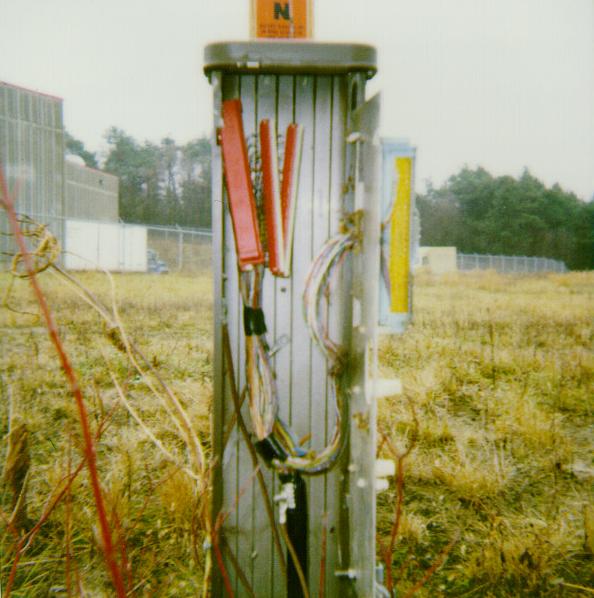 left, the box has been exposed, showing these colourful
wires. However, there is a more stealthy, and perhaps better approach to usings these boxes to place calls. After watching a lineman
working on a box, I see he uses something more than a handset and a set of clippers to test the line. If you take a closer look
at the picture of open boxes, we can see small piece of plastic connected to the
wire. I have taken a closer look, and discovered 2 rows to tiny slots
for the adapter to be plugged into. Apparently, the "adapter" used here is
the RJ21 connector. A 25-Pair Amphenol connector is also another name for this
adapter. This remains an untested, educated guess at the moment, as I do not have one of these connectors to
to prove this theory, or even play around with. With a little luck, and a some carelessness
on a linemans part, I should hope to get one in the near future.
However, if you have experience with this, please let me, Magma, know. Naturally, any submissions will be posted here
on the site. The following information about about this box also pertains to the following boxes
shown below:
left, the box has been exposed, showing these colourful
wires. However, there is a more stealthy, and perhaps better approach to usings these boxes to place calls. After watching a lineman
working on a box, I see he uses something more than a handset and a set of clippers to test the line. If you take a closer look
at the picture of open boxes, we can see small piece of plastic connected to the
wire. I have taken a closer look, and discovered 2 rows to tiny slots
for the adapter to be plugged into. Apparently, the "adapter" used here is
the RJ21 connector. A 25-Pair Amphenol connector is also another name for this
adapter. This remains an untested, educated guess at the moment, as I do not have one of these connectors to
to prove this theory, or even play around with. With a little luck, and a some carelessness
on a linemans part, I should hope to get one in the near future.
However, if you have experience with this, please let me, Magma, know. Naturally, any submissions will be posted here
on the site. The following information about about this box also pertains to the following boxes
shown below: 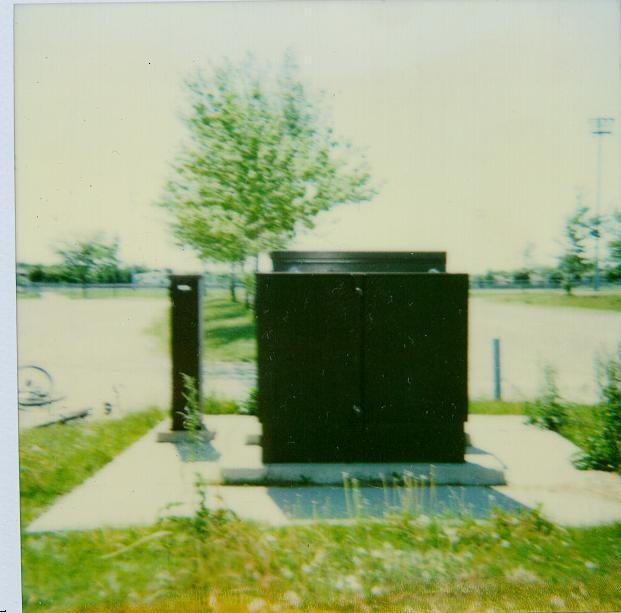
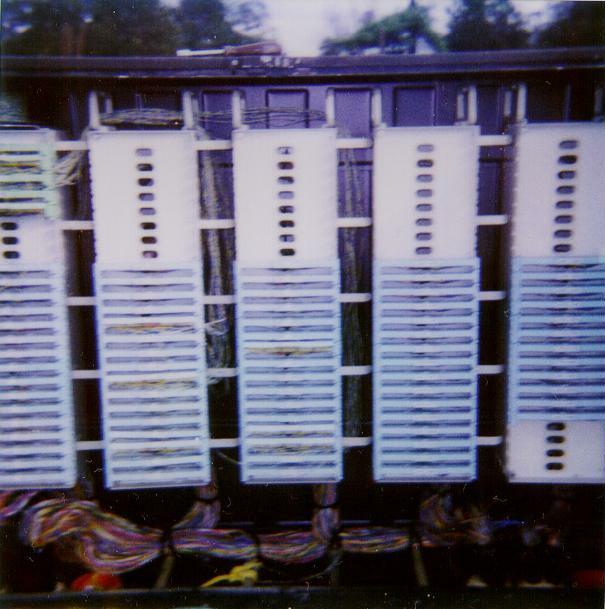
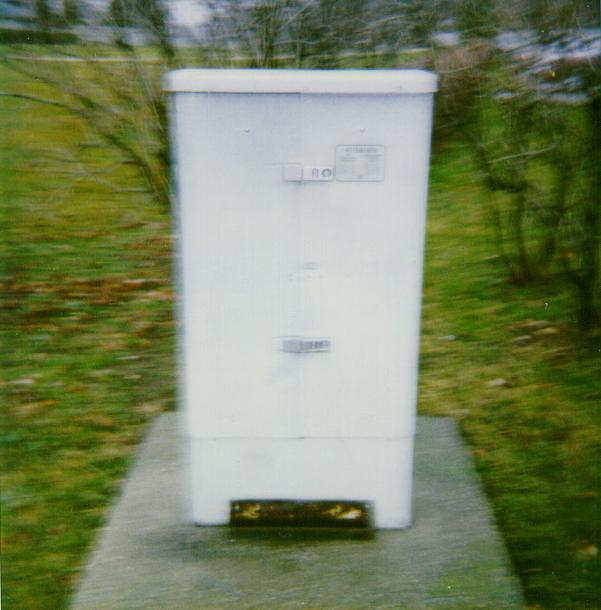
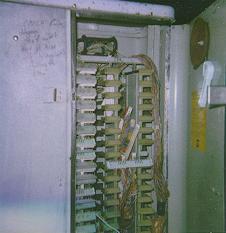
Have we missed a box? If so, please let Magma, know. This section of GHU is being constantly updated as more information about these boxes becomes available. Last updated - 7/22/00 |
Home